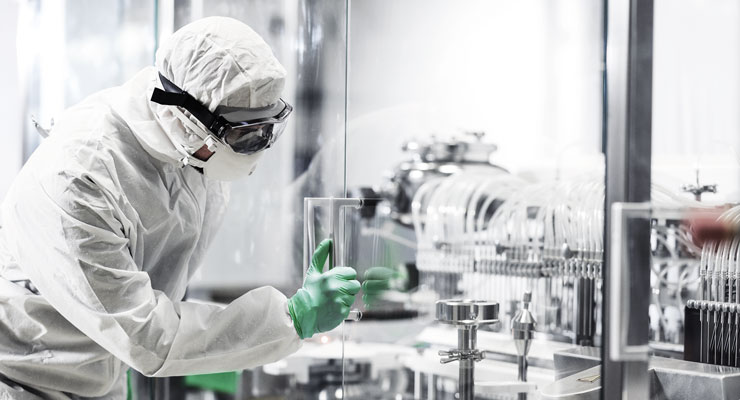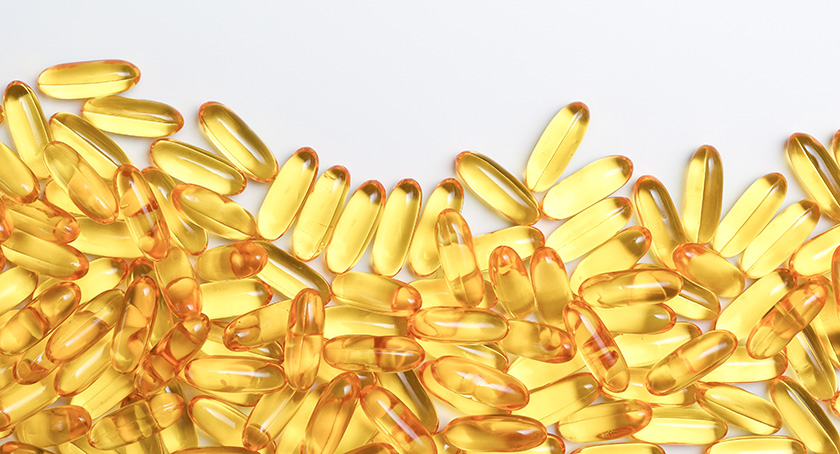Features
Pharmaceutical Manufacturing Equipment Trends
Demand for flexibility remains the driving force behind equipment systems.

As drug development trends change, so too must manufacturing processes and equipment. Contract Pharma looks into how the pandemic has impacted equipment needs, the latest technologies being leveraged in manufacturing, as well as continued challenges and where advances have been made across digital technologies, cell and gene manufacture, single use technologies, and continuous manufacturing.
Pharma & Biopharma Trends
Personalized medicines topped one-third of all new drug approvals in 2020 for the third time in the last four years, according to a recent report from The Personalized Medicine Coalition. The U.S. FDA approved 19 personalized therapies, one cell-based immunotherapy, and eight new diagnostic indications, accounting for 39% of the new drugs FDA approved last year.1
Key among the trends driving equipment needs is the growing number of complex and specialized therapies produced in small quantities, as well as drug delivery of therapies administered at home. In addition to flexibility for customization, is greater automation and modularity to address changing needs.
Raffaele Pace, engineering vice president of operations for Stevanato Group, said, “The shift to more specialized therapies and the broader array of injection and inhaler devices, present significantly different designs in terms of size, material and shape, and require a complete change in manufacturing processes. Vendors are called to meet this requirement by offering flexible equipment that can process small batch sizes and handle different container types on a single machine, or assemble several formats or even different devices on the same line.”
Modularity is also key. Pace noted, whether an organization needs to scale up to increase production capacity or scale down to mix smaller batches, manufacturing equipment must adapt.
Containment technologies play a big role in equipment needs for today’s specialized therapies. Dr. Andreas Mattern, director of product management pharma at Syntegon, said, “Biotechnologically produced drugs for the treatment of cancer, autoimmune diseases, or rare diseases affecting only a small patient population, are increasingly being developed and call for ever smaller batch sizes and highly flexible equipment. This trend is accompanied by the need for the highest product quality and protective measures. Containment technologies are highly requested, not only for liquid fill-finish lines, but also increasingly for oral solid dosage (OSD) forms. Here, containment equipment has the very important task of protecting operators from increasingly toxic substances.”
Personalized medicines, such as those to treat orphan diseases, continue to have a massive impact on the pharmaceutical industry, according to Jan Deininger, group communications manager at OPTIMA Packaging Group. “Each drug represents a particularly high financial value and is complex to produce, which challenges the technology in various ways, most importantly safety and automation. This also influences the requirements for filling and closing machines. Small batches require high system flexibility as well as fully automated and fully safeguarded processes. Under these conditions and with these technologies, even small, very valuable batches can be processed very efficiently.”
Optimization of equipment is also increasingly important for drug manufacturers. In the area of tablet press technology, Frederick Murray, president of KORSCH America Inc., said, “The emphasis on Overall Equipment Effectiveness continues to be a major consideration. Tracking machine uptime, output, and yields, in addition to key quality attributes, improvement efforts around reducing change times, or permitting a single operator to monitor multiple machines, are key focus areas.” Murray added that most products have been validated across a defined speed range of the tablet press, but often, there is the potential to run at the maximum validated speed if the right steps are taken with optimizing the press setup.
Needs Amid The Pandemic
The urgent need to produce millions of vaccines in short order has placed heavy demands on the industry. Here, manufacturing optimization is needed, leveraging production innovations and new technologies to accelerate processes with maximum efficiency.
To address this Herculean task, according to Massimiliano Cesarini, sales director, Romaco S.r.l., “As a manufacturer of packaging and process technology, the main issue is the increased demand for high-performance technology for the aseptic filling of vaccines. To help address this need, Romaco’s Macofar VF high-speed machine fills vials with pharmaceutical liquids and biotech products under advanced aseptic conditions.” The machine has a maximum filling speed of 24,000 vials per hour and is able to maintain cold chains during filling, which is necessary for some vaccines and other pharmaceutical liquids.
Due to the pandemic, the requirements for a filling line are even higher. “It’s not enough that it’s fast during operation, it must also enable production to start as quickly as possible. For this reason, many vaccine producers are moving away from isolator technology and opting for equipment with an open RABS (Restricted Access Barrier System),” Cesarini said.
With respect to the Macofar VF, for example, equipped with open RABS, the machine is ready for production in about half the time and the validation and qualification of the system can be completed faster as well, according to Cesarini.
More than 1,800 COVID-19 vaccines and therapies are currently being investigated in over 4,000 clinical trials, and according to Mattern of Syntegon, “Existing lab and manufacturing capacities must accordingly be reallocated or rebuilt in record time. For contract manufacturers, this need has resulted in an order increase of at least 200% in the infectious disease segment in 2020 compared to 2019.”
Many producers and developers of vaccines and active ingredients for the treatment of COVID-19 are using formulation systems, filling lines for vials, and inspection machines. According to Mattern, “Our experience with biologics enables us to support the production of novel mRNA vaccines with cold filling. Inspection machines from Syntegon are already used in the production process of mRNA COVID-19 vaccines.”
The pharma industry is often slow in adopting production innovations or new technologies, but the COVID-19 pandemic has put pressure on accelerating these processes, according to Pace of Stevanato Group. “Vendors face an unprecedented challenge and are implementing strategies that enable them to operate even more efficiently, shifting in some cases from a traditional sequential process to an agile and modular approach. By ensuring equipment and software compatibility and consistency early on, the ramp-up process is expedited and the risk of unforeseen disruptive factors significantly reduced. Additionally, equipment should be future-proof, allowing a transition to other products, if necessary. For inspection, for instance, flexibility also means incorporating versatile technologies on automatic machines—capable of analyzing the full range of defect scenarios,” Pace said.
With respect to processing and packaging equipment, Michele Leonardi, sales manager, Packaging Division for MG America, said, “Throughout 2020 and now in early 2021, we have noted a surge in the need for vial packaging equipment, mostly associated with COVID-19 vaccines. Speed has become increasingly paramount. The market saw urgent needs for equipment available in just a matter of weeks, when such machinery typically takes months to deliver, install and validate.”
The industry is also moving toward greater automation, as there are a number of compelling reasons to do so. According to Deborah Smook, vice president of marketing & business development for TurboFil Packaging Machines LLC, “From a quality standpoint, there’s no question that automation leads to greater consistency. Even if throughput doesn’t increase, there is less waste with a more consistent process. Of course, with the pandemic there are additional incentives, including maintaining social distance between equipment operators.”
Equipment Innovation
Where the industry is slow to adopt change due to strict regulatory and validation requirements, increasingly lingering technology trends, such as digitalization and Artificial Intelligence (AI), are being leveraged for a high degree of flexibility in manufacturing processes, and greater efficiency.
The use of robots in liquid filling operations reduces the risk of contamination through human contact, according to Mattern of Syntegon. “Machine operators no longer need to perform repetitive tasks, which makes processes safer, more precise, reproducible and validatable. In the future, more and more robotic solutions will be used; the boundaries will continue to shift due to decreasing costs and new technologies such as AI,” Mattern said.
“According to recent studies, next-generation digital technologies can help reduce pharma manufacturing costs by up to 20%, improve quality, and increase flexibility2; and pharma companies are likely to invest significantly in AI and Big Data over the next two years3,” said Pace of Stevanato Group. “In our operations, the prominent applications include AI and Digital Twin.”
Pace explained, AI technology applied to automated visual inspection machines can help reduce parameterization and production costs, support robust root analysis and move to a predictive method exploiting the large amounts of data collected.
Digital twin consists of a virtual replica of physical manufacturing equipment that can be used to run simulations before actual machines are built. Pace said, “This technology can offer a lot of data and visibility on how to optimize processes in the drug delivery device assembly.”
The support of digitalization technologies for filling and closing processes is being further extended, according to Deininger of OPTIMA. “Optima has implemented a project in which video monitoring of the processing operations is almost comprehensive. In the event of an error message, this allows the cause to be narrowed down in detail, analyzed, and possibly large parts of batches to be saved, which would otherwise be rejected in their entirety,” said Deininger.
Advances & Obstacles
While there have been significant advances in manufacturing innovation, certain challenges remain in the burgeoning area of Advanced Therapy Medicinal Products (ATMPs), based on genes, tissues or cells. Also, while Single Use Technologies (SUTs) are fast becoming the gold standard, and continuous production strategies make headway in OSD, certain obstacles remain.
With a growing number of approved therapies offering impressive outcomes, cell therapies hold great promise, however, commercial manufacturing of these complex and costly therapies is a key challenge. Dr. Tania Pereira Chilima, deputy CTO at Univercells Technologies, said, “Cell and gene therapies continue to be challenging to develop processes that can scale-up through to commercial manufacturing because the technologies that exist are not purpose fit for the special needs of these advanced therapies. And while innovation is happening, companies are also looking to control the cost of goods sold (COGs) to reliably produce and deliver commercial volumes of drugs to the market. This requires technologies that are readily available and validated for use.”
The costs for this form of therapy are still extremely high today and the production process is complex, noted Deininger of OPTIMA. “Pharmaceutical engineering is challenged to contribute solutions for efficient, cost-effective production and filling by further automating and optimally safeguarding the manufacturing and processing steps. Platforms specifically for cell and gene therapies are needed,” Deininger said. To that end, OPTIMA designed automated, modular and highly flexible machine platforms based on isolator technology that can be equipped with robotic functions.
With respect to Single Use Technologies, Chilima said, “SUTs are increasingly being used across the industry because the flexibility they offer is a real advantage over stainless-steel. Though it was met with skepticism at first, SUTs have left the state of nascent technology to become a standard reference.” However, challenges to implementation can still be associated with these technologies—most notably their sourcing and supply chain, according to Chilima, noting lead times can be long, especially during the current pandemic.
Lastly, in the field of continuous tablet production, significant technical advancements have been made, including in-line granulation, blending, compression, and coating, according to Murray of KORSCH America Inc. “The increased use of Process Analytical Technology (PAT) sensors and fully integrated control systems has increased the capability of these systems, however, validation execution and capital investment remain the key barriers,” said Murray. “The tablet press is a critical component in any continuous production line; however, the press control system must be fully integrated with the central line system to permit control of peripherals, override capability on the material feed and tablet discharge, and full integration of process parameters, including in-line NIR probes,” added Murray.
As more and more linked and chained processes are being developed, the main challenge is automating the processes by connecting technologies from different suppliers to develop fully integrated processes, according to Chilima of Univercells Technologies. “In addition to this technical challenge, the integration of continuous quality control (QC) testing solutions remains a key point from a regulatory perspective for the industry,” said Chilima.
While continuous manufacturing is an unbroken trend in OSD production, Syntegon has developed a different approach. Mattern explained, “As opposed to the common complex mass flow rate based approach, excipients and active ingredients are dosed as a discrete mass on both the Xelum production platform and the Xelum R&D unit. This makes it possible to dose even smallest amounts of APIs of less than 1% reliably.”
According to Pace of Stevanato Group, this pandemic offered a vital lesson for the future: optimizing the engineering and manufacturing equipment process, integrating proof-of-value stages through tight cooperation with customers, and use of new technologies is possible.
Kristin Brooks is the Managing Editor of Contract Pharma. She can reached at KBrooks@RodmanMedia.com
References
- Personalized Medicine Coalition, Personalized Medicine at FDA: The Scope & Significance of Progress in 2020, www.personalizedmedicinecoalition.org
- Bain & Company, Digital Manufacturing Is (Finally) Coming to Pharma, 2020
- GlobalData, Digital Transformation and Emerging Technology in the Healthcare Industry, 2020 Edition




















